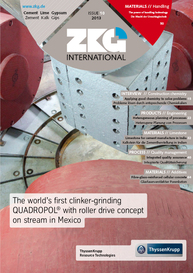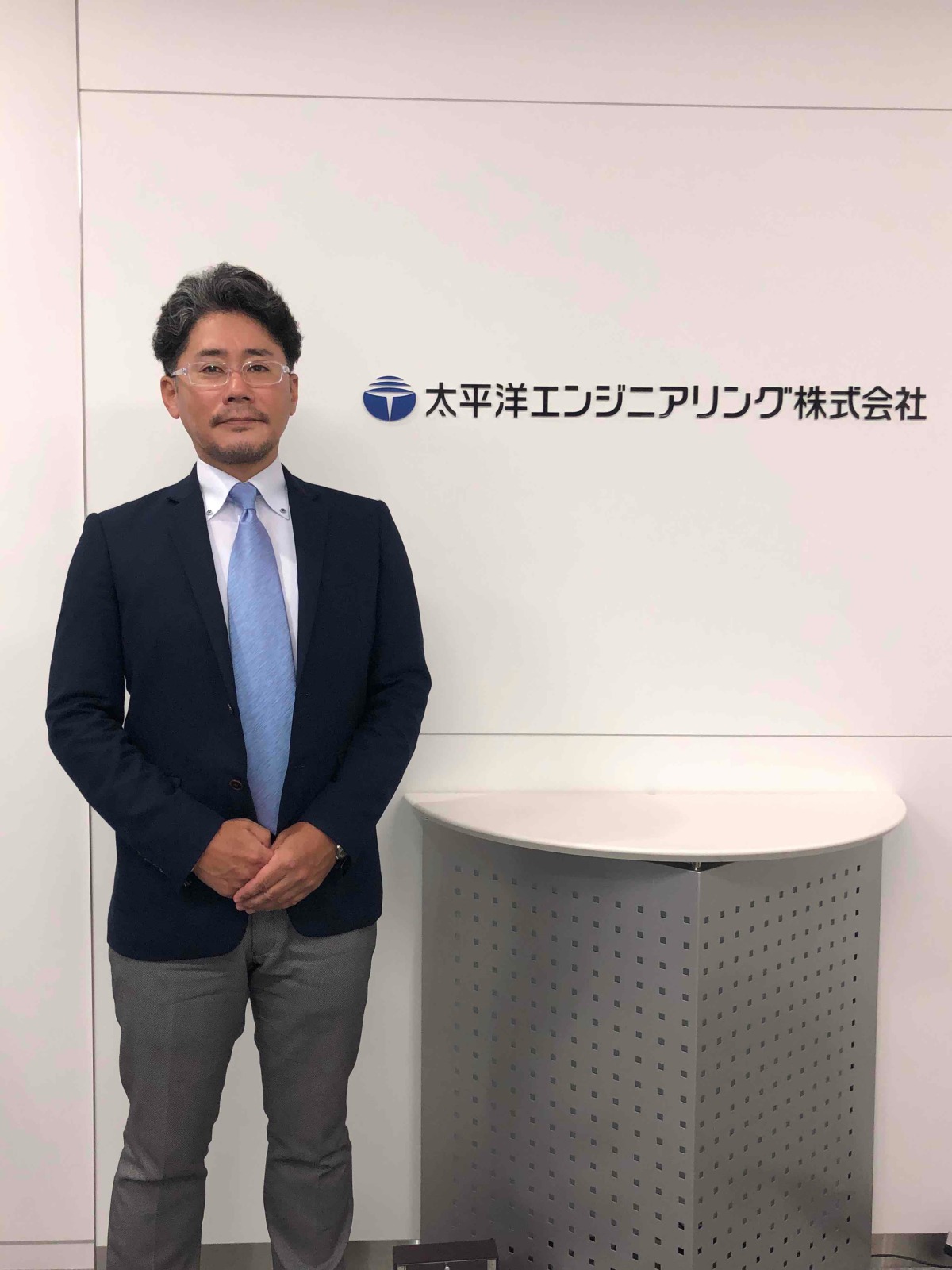Ashland Specialty Ingredients has been a decades-long leader in developing additives that help companies in the global construction industry achieve cost savings and improved product quality. This mission is more important than ever in today’s challenging global construction industry environment.
Torsten Busch is responsible for launching Ashland Specialty Ingredients’ new products for the global construction industry. He recently shared his thoughts with ZKG International on the challenges and opportunities in providing solutions to some of the industry’s most difficult problems.
ZKG: Mr. Busch, you have 28 years of experience in developing cutting-edge products for the construction sector. How has the construction industry evolved over that time?
Busch: The global construction industry is evolving in different ways. In many markets, there is a strong drive among contractors, mortar manufacturers and others toward improved performance and greater productivity. Global and regional industry standards have become more and more important and our customers and their customers have to meet very specific criteria and specifications in terms of product quality and durability.
Today, contractors and companies that work for them have to guarantee their work over the long term. And for very good reason! Renovations and new construction can be very expensive and the quality has to match the cost. For example, expensive bathroom tiles that do not hold on the substrate because of low-quality adhesive basically means starting the job all over again. In other regions, the market is changing from very traditional job site cement and sand mixes to more advanced, ready-to-use systems. Application techniques are changing too. For example, there is a trend to move from manual application to machine application for productivity reasons. Our job in product development is to recognize these trends and the needs they create. Then we can develop new technologies to satisfy those needs.
ZKG: What do you see as the single most important element in Ashland’s ability to successfully develop value-adding additives for the construction industry? Why?
Busch: The most important element is our people. Ashland’s clear strength is that our people fully understand both formulation designs and application technologies and methods. Our marketing, R&D, technical service and sales teams work very closely with our customers and their customers. This enables us to identify and creatively address marketplace needs and trends. What we do at Ashland is not about the chemistry itself. It’s about providing solutions to difficult problems in the marketplace.
ZKG: How much time do you spend in the field speaking with cement and mortar manufacturers, builders and others? What do you want to learn from these interactions?
Busch: I travel globally about 50 % of my time. This allows me to have in-depth discussions with customers. It also enables me to lead customer seminars, where I can dialogue with formulators, top managers, marketing executives and others.
For me, these interactions with customers are essential and the most exciting and rewarding part of my job. I’ve been in this business for almost 29 years, and I can’t recall a single conversation with a customer where I did not learn something important. You can’t sit in an office, detached from the marketplace, and make decisions based on what you think is important to your customer base. You have to learn what’s important to them.
ZKG: Can you define the product development capabilities at Ashland Specialty Ingredients? What resources are available to fuel Ashland’s product development effort?
Busch: Ashland is committed to being a global leader in solving the construction industry’s most pressing problems. That requires a significant technical capability and we have R&D centers in several countries. The centers with the greatest focus on the construction industry, however, are in Duesseldorf, Germany and Wilmington, Delaware in the U.S.
To ensure that we understand and respond to regional needs, we also have a network of technical service centers based in Europe, the U.S., China and India, where our technical experts support our sales organizations and customers. These labs are fully equipped with the most modern instruments and technologies available. They enable us to test our products and new product developments in actual job-site conditions using regional application techniques.
And finally, Ashland has state-of-the-art, global manufacturing facilities to ensure a reliable supply of our products to customers.
ZKG: What are the challenges in developing additives for global construction markets?
Busch: Certain marketplace needs are global, others are regional and some are customer and application specific. There are plenty of examples of this. For one, climatic conditions and performance requirements often differ, sometimes even within a country. For another, cement and aggregate quality differs from country to country.
Ashland’s challenge, as a supplier, is to understand these differences and develop products that meet regional and local needs, perform under regional and local conditions and can be produced using locally available raw materials. Generally speaking, a product developed for a European application will not perform the same in Asia. Raw materials and working habits are simply too different.
ZKG: How important is speed in bringing a new product to market in a world where the pace of change is accelerating?
Busch: Speed to market is extremely important, but speed cannot compromise good science, fully understanding marketplace needs and proper product development procedures. It’s up to us to properly resource high value projects that bring products to market in a timely fashion. We use a highly successful, internal process to ensure that we meet our timelines and only allocate resources to the most important and meaningful projects. Ashland is not alone in the market. We know that our customers will give other suppliers similar innovation opportunities if our product development process is slow and cumbersome.
ZKG: How long does it take to develop a cutting-edge additive?
Busch: In terms of timing, developing an additive can range from a few months to several years, depending on the project’s complexity. The average is probably between six and 18 months from ideation to commercialization. The front-end work in product development is extremely important and correcting mistakes in this phase is very costly. The earlier you understand the underlying marketplace needs, the less time is required during the product development and launch phases.
Once the business case is clear, the project is in the hands of our R&D organization, working very closely with predefined target customers. After the product under development has been validated internally, we ask our customers to evaluate it to ensure that it meets their expectations. Only when we have positive feedback from customers do we scale up, train our sales and marketing teams and commercialize the additive.
ZKG: How would you define a successful partnership between construction industry leaders and Ashland Specialty Ingredients? Can you give an example of how such a partnership has paid dividends for the marketplace?
Busch: In the product development world, the best partnerships are built on mutual trust, the partners are open-minded and the relationships are as transparent as they can be. We recently worked closely with a highly respected Asian customer, a leading manufacturer of skim coats. The goal of our partnership was to develop an additive that improved the efficiency and effectiveness of skim coats applied in extremely hot, dry climates. After more than a year of partnering with this customer, our efforts paid significant dividends when we commercialized Ashland Aquatherm™, an additive which enhances skim coat performance when temperatures exceed 35 °C.
In the end, the hard work to bring Ashland Aquatherm to market paid dividends for everyone involved. That’s the spot where Ashland prefers to be.
ZKG: What do you see on the horizon for the development of value-adding additives for the construction industry? From where will the next breakthroughs come?
Busch: The possibilities for next generation additives are almost limitless. Emerging industry trends provide the best clues as to the problems that will be addressed by these new additives. Take, for example, the production of ordinary Portland cement, which consumes large amounts of energy and generates high levels of carbon dioxide emissions. Because more and more people are embracing sustainability, cement manufacturers want to reduce the carbon footprint of their products. This is an opportunity for a company like Ashland to develop an additive that makes sustainability the cornerstone of new age construction.
There is also an emerging marketplace preference for lighter, thinner and larger decorative tiles. Installing these tiles with traditional mortar is not possible. Could Ashland develop a breakthrough additive that would make traditional mortars more efficient and effective for installers of these lighter, larger tiles? Certainly.
ZKG: As you mentioned, sustainability continues to be increasingly important around the world. How does that factor into the development of new additives?
Busch: Sustainability and protecting the environment are critical in developing performance-enhancing additives. A competitive advantage we have at Ashland is that our products, to a large extent, are cellulose-based and cellulose is a renewable raw material. One of the key growth segments for our industry is providing solutions to the problem of high energy consumption. In hot-weather regions, a lot of energy is wasted by excessive use of air conditioning. In many cold-weather regions, more energy is used for heating than is necessary. Ashland offers solutions that enable high-quality installation of thermo-insulation systems and improve their performance. This benefits both people and the environment.
ZKG: Ashland purchased International Specialty Products in mid-2011. How has that affected the product development effort at Ashland Specialty Ingredients?
Busch: The acquisition of ISP has opened new doors for us in terms of the scope of our product development work. We can now talk about more chemistries with our customers, making the discussions even more fruitful. The acquisition and integration of ISP into Ashland also helps us understand the potential of new products that were not previously on our radar screen.
One example is grouts for tiles. Before the ISP acquisition, we primarily supplied cellulose ethers, like Culminal™ cellulose ethers and Aquapas™ redispersible polymer powders, to improve grout performance. Now, we can add another interesting performance enhancer – biocides. Bathrooms and facades covered with fungi and/or algae not only look bad, they also represent health risks. Ashland is now better positioned to address these problems and, at the same time, improve the quality of ceramic finishes.




